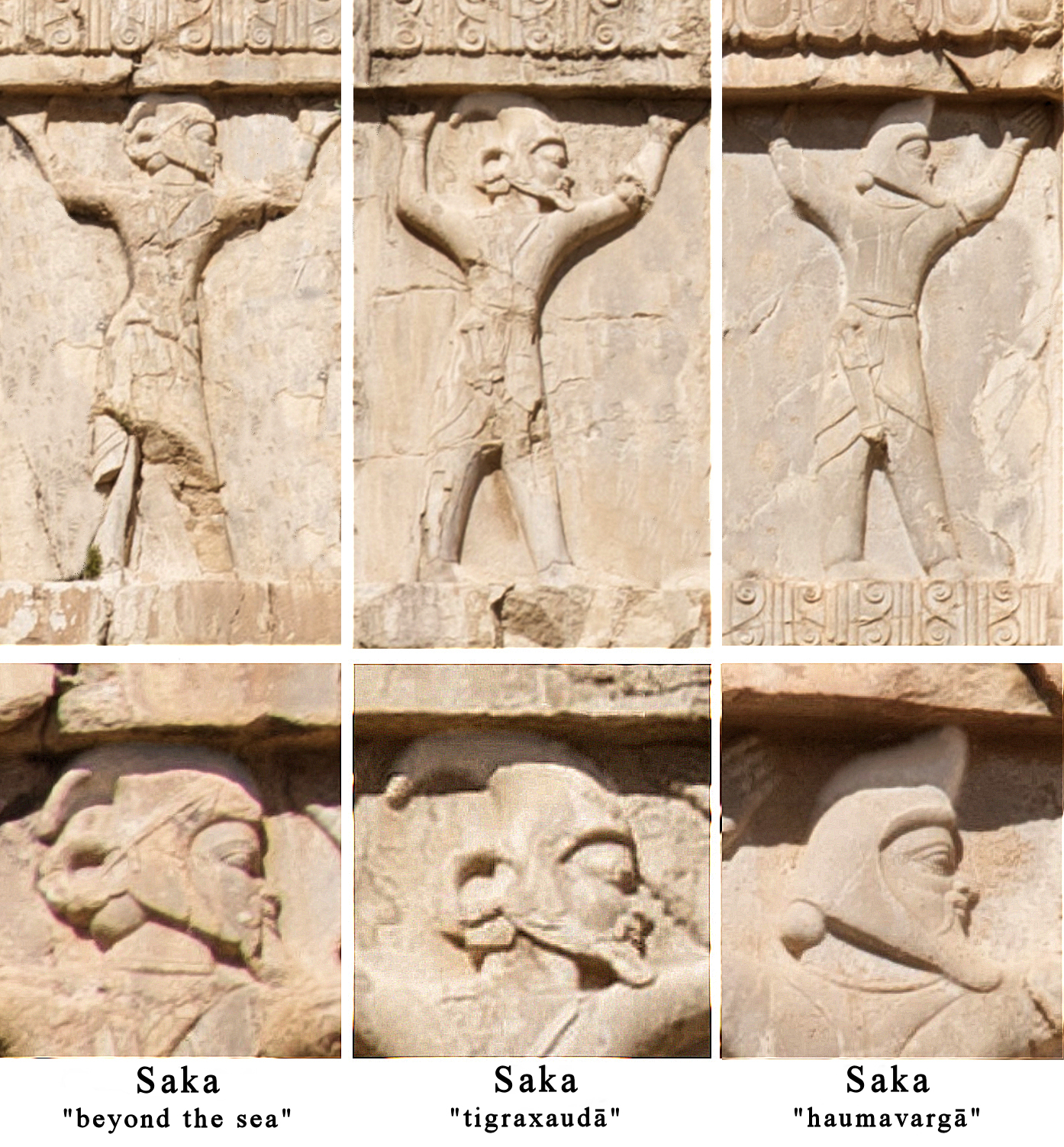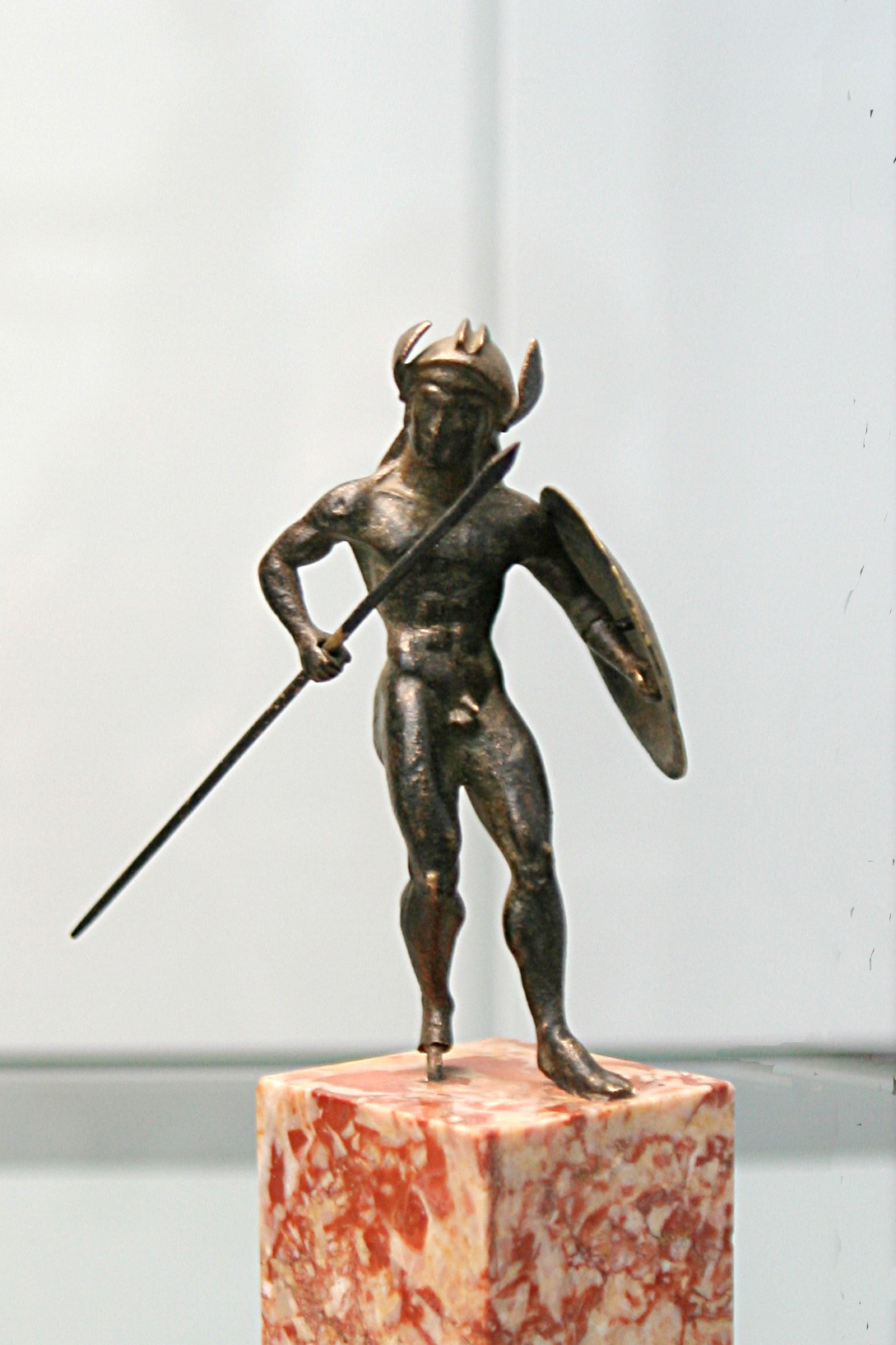|
Sagaris
The sagaris () is an ancient shafted weapon used by the horse-riding ancient Saka and Scythian peoples of the great Eurasian steppe. It was used also by Western and Central Asian peoples: the Medes, Persians, Parthians, Indo-Saka, Kushans, Mossynoeci, and others living within the milieu of Iranian peoples. Sagaris is also the etymological origin of the Slavic word for "axe". According to Aristarchus of Samothrace, the legendary Amazons used the ''sagaris'', as well. In ''The Histories'', Herodotus attributes the sagaris to the Sacae Scythians in the army-list of Xerxes the Great. The ''sagaris'' was a kind of battle-axe, or sometimes war hammer. Examples have been collected from Eurasian steppe archeological excavations, and are depicted on the Achaemenid cylinders and ancient Greek pottery and other surviving iconographic material. It is a long-shafted weapon with a metal head, with an either sharp (axe-like) or blunt (hammer-like) edge on one side and a sharp (straight ... [...More Info...] [...Related Items...] OR: [Wikipedia] [Google] [Baidu] |
Scythian
The Scythians ( or ) or Scyths (, but note Scytho- () in composition) and sometimes also referred to as the Pontic Scythians, were an ancient Eastern Iranian equestrian nomadic people who had migrated during the 9th to 8th centuries BC from Central Asia to the Pontic Steppe in modern-day Ukraine and Southern Russia, where they remained established from the 7th century BC until the 3rd century BC. Skilled in mounted warfare, the Scythians replaced the Agathyrsi and the Cimmerians as the dominant power on the western Eurasian Steppe in the 8th century BC. In the 7th century BC, the Scythians crossed the Caucasus Mountains and frequently raided West Asia along with the Cimmerians. After being expelled from West Asia by the Medes, the Scythians retreated back into the Pontic Steppe in the 6th century BC, and were later conquered by the Sarmatians in the 3rd to 2nd centuries BC. By the 3rd century AD, last remnants of the Scythians were overwhelmed by the Goths, and by th ... [...More Info...] [...Related Items...] OR: [Wikipedia] [Google] [Baidu] |
Amazons
The Amazons (Ancient Greek: ', singular '; in Latin ', ') were a people in Greek mythology, portrayed in a number of ancient epic poems and legends, such as the Labours of Hercules, Labours of Heracles, the ''Argonautica'' and the ''Iliad''. They were female warriors and hunters, known for their physical agility, strength, archery, riding skills, and the arts of combat. Their society was closed to men and they raised only their daughters, returning their sons to their fathers with whom they would only socialize briefly in order to reproduce. Courageous and fiercely independent, the Amazons, commanded by their queen, regularly undertook extensive military expeditions into the far corners of the world, from Scythia to Thrace, Asia Minor, and the Aegean Islands, reaching as far as Arabia and Egypt. Besides military raids, the Amazons are also associated with the foundation of temples and the establishment of numerous ancient cities like Ephesos, Cyme (Aeolis), Cyme, Smyrna, Sino ... [...More Info...] [...Related Items...] OR: [Wikipedia] [Google] [Baidu] |
Battle-axe
A battle axe (also battle-axe, battle ax, or battle-ax) is an axe (tool), axe specifically designed for combat. Battle axes were designed differently to utility axes, with blades more akin to cleavers than to wood axes. Many were suitable for use in one hand, while others were larger and were deployed two-handed. Axes designed for warfare ranged in weight from just over , and in length from just over to upwards of , as in the case of the Danish axe or the sparth axe. Cleaving weapons longer than would arguably fall into the category of polearms. Overview Through the course of human history, commonplace objects have been pressed into service as weapons. Axes, by virtue of their ubiquity, are no exception. Besides axes designed for combat, there were many battle axes that doubled as tools. Axes could be modified into deadly projectiles as well (see the francisca for an example).Underwood, Richard (1999). ''Anglo-Saxon Weapons and Warfare''. p.35-37. Tempus Publishing. . Axes w ... [...More Info...] [...Related Items...] OR: [Wikipedia] [Google] [Baidu] |
Saka
The Saka, Old Chinese, old , Pinyin, mod. , ), Shaka (Sanskrit (Brāhmī): , , ; Sanskrit (Devanāgarī): , ), or Sacae (Ancient Greek: ; Latin: were a group of nomadic Iranian peoples, Eastern Iranian peoples who lived in the Eurasian Steppe and the Tarim Basin from the 9th century BC to the 5th century AD. "Modern scholars have mostly used the name Saka to refer specifically to Iranians of the Eastern Steppe and Tarim Basin" "In modern scholarship the name 'Sakas' is reserved for the ancient tribes of northern and eastern Central Asia and Eastern Turkestan to distinguish them from the related Massagetae of the Aral region and the Scythians of the Pontic steppes. These tribes spoke Iranian languages, and their chief occupation was nomadic pastoralism." The Saka were closely related to the Scythians, and both groups formed part of the wider Scythian cultures. However, they are distinguished from the Scythians by their specific geographical and cultural traits. The Saka la ... [...More Info...] [...Related Items...] OR: [Wikipedia] [Google] [Baidu] |
Iconographic
Iconology is a method of interpretation in cultural history and the history of the visual arts used by Aby Warburg, Erwin Panofsky and their followers that uncovers the cultural, social, and historical background of themes and subjects in the visual arts. Though Panofsky differentiated between iconology and iconography, the distinction is not very widely followed, "and they have never been given definitions accepted by all iconographers and iconologists". Few 21st-century authors continue to use the term "iconology" consistently, and instead use iconography to cover both areas of scholarship. To those who use the term, iconology is derived from synthesis rather than scattered analysis and examines symbolic meaning on more than its face value by reconciling it with its historical context and with the artist's body of work – in contrast to the widely descriptive iconography, which, as described by Panofsky, is an approach to studying the content and meaning of works of art th ... [...More Info...] [...Related Items...] OR: [Wikipedia] [Google] [Baidu] |
Axes
Axes, plural of ''axe'' and of ''axis'', may refer to * ''Axes'' (album), a 2005 rock album by the British band Electrelane * a possibly still empty plot (graphics) See also * Axis (other) An axis (: axes) may refer to: Mathematics *A specific line (often a directed line) that plays an important role in some contexts. In particular: ** Coordinate axis of a coordinate system *** ''x''-axis, ''y''-axis, ''z''-axis, common names ... * Axess (other) * Axxess (other) {{disambig ... [...More Info...] [...Related Items...] OR: [Wikipedia] [Google] [Baidu] |
British Museum
The British Museum is a Museum, public museum dedicated to human history, art and culture located in the Bloomsbury area of London. Its permanent collection of eight million works is the largest in the world. It documents the story of human culture from its beginnings to the present.Among the national museums in London, sculpture and decorative art, decorative and applied art are in the Victoria and Albert Museum; the British Museum houses earlier art, non-Western art, prints and drawings. The National Gallery holds the national collection of Western European art to about 1900, while art of the 20th century on is at Tate Modern. Tate Britain holds British Art from 1500 onwards. Books, manuscripts and many works on paper are in the British Library. There are significant overlaps between the coverage of the various collections. Established in 1753, the British Museum was the first public national museum. In 2023, the museum received 5,820,860 visitors, 42% more than the previous y ... [...More Info...] [...Related Items...] OR: [Wikipedia] [Google] [Baidu] |
Euthanasia
Euthanasia (from : + ) is the practice of intentionally ending life to eliminate pain and suffering. Different countries have different Legality of euthanasia, euthanasia laws. The British House of Lords Select committee (United Kingdom), select committee on medical ethics defines euthanasia as "a deliberate intervention undertaken with the express intention of ending a life to relieve intractable suffering". In the Netherlands and Belgium, euthanasia is understood as "termination of life by a doctor at the request of a patient". The Dutch law, however, does not use the term 'euthanasia' but includes the concept under the broader definition of "assisted suicide and termination of life on request". Euthanasia is categorised in different ways, which include Voluntary euthanasia, voluntary, Non-voluntary euthanasia, non-voluntary, and Involuntary euthanasia, involuntary. [...More Info...] [...Related Items...] OR: [Wikipedia] [Google] [Baidu] |
Bactria
Bactria (; Bactrian language, Bactrian: , ), or Bactriana, was an ancient Iranian peoples, Iranian civilization in Central Asia based in the area south of the Oxus River (modern Amu Darya) and north of the mountains of the Hindu Kush, an area within the north of modern Afghanistan, Tajikistan and Uzbekistan. Bactria was strategically located south of Sogdia and the western part of the Pamir Mountains. The extensive mountain ranges acted as protective "walls" on three sides, with the Pamir on the north and the Hindu Kush on south forming a junction with the Karakoram, Karakoram range towards the east. Called "beautiful Bactria, crowned with flags" by the Avesta, the region is considered, in the Zoroastrianism, Zoroastrian faith, to be one of the "Avestan geography, sixteen perfect Iranian lands" that the supreme deity, Ahura Mazda, had created. It was once a small and independent kingdom struggling to exist against nomadic Turya (Avesta), Turanians. One of the early centres of ... [...More Info...] [...Related Items...] OR: [Wikipedia] [Google] [Baidu] |
Military Historian
Military history is the study of armed conflict in the history of humanity, and its impact on the societies, cultures and economies thereof, as well as the resulting changes to local and international relationships. Professional historians normally focus on military affairs that had a major impact on the societies involved as well as the aftermath of conflicts, while amateur historians and hobbyists often take a larger interest in the details of battles, equipment, and uniforms in use. The essential subjects of military history study are the causes of war, the social and cultural foundations, military doctrine on each side, the logistics, leadership, technology, strategy, and tactics used, and how these changed over time. On the other hand, just war theory explores the moral dimensions of warfare, and to better limit the destructive reality caused by war, seeks to establish a doctrine of military ethics. As an applied field, military history has been studied at academies a ... [...More Info...] [...Related Items...] OR: [Wikipedia] [Google] [Baidu] |
War Hammer
A war hammer (French: ''martel-de-fer'', "iron hammer") is a weapon that was used by both infantry, foot soldiers and cavalry. It is a very old weapon and gave its name, owing to its constant use, to Judas Maccabeus, Judah Maccabee, a 2nd-century BC Jewish rebel, and to Charles Martel, one of the rulers of France. In the 15th and 16th centuries, the war hammer became an elaborately decorated and handsome weapon. The war hammer was a popular weapon in the late Middle Ages, medieval period. It became somewhat of a necessity in combat when armor became so strong that swords and axes were no longer able to pierce and ricocheted upon impact. The war hammer could inflict significant damage on the enemy through their heavy impact without the need to pierce the armor. Design A war hammer consists of a handle and a head. The length of the handle may vary, the longest being roughly equivalent to that of a halberd (five to six feet or 1.5 to 1.8 meters), and the shortest about the same as t ... [...More Info...] [...Related Items...] OR: [Wikipedia] [Google] [Baidu] |








